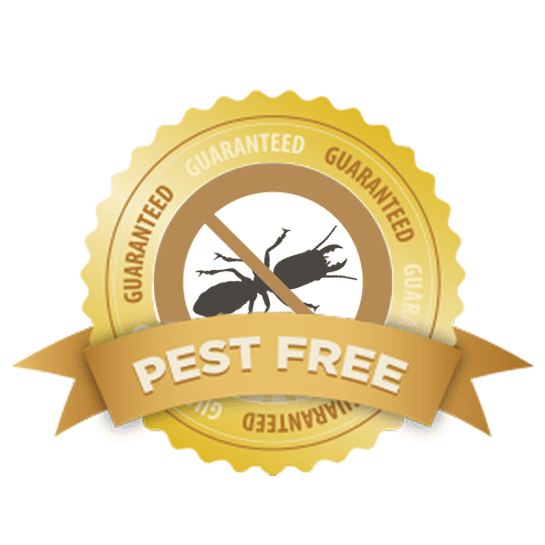A1 Charlotte Pest Control Companies - Your Regional Pest Specialists
Bed Bug Treatment Break Down: Comparing Chemical Vs. Non-Chemical Solutions
In the world of bug control, especially when managing the persistent issue of bed pests, the selection between chemical and non-chemical therapy services can be a pivotal one. Both techniques supply distinctive advantages and disadvantages, affecting factors such as performance, safety factors to consider, and overall price. By checking out the nuanced details of each method, a more clear understanding of which path to seek in attending to a bed bug infestation can be obtained.
Efficiency of Chemical Treatments
Chemical therapies for bed insect infestations have been extensively identified for their powerful and fast efficacy in eliminating these insects. When taking into consideration the performance of chemical treatments, it is important to recognize that they can provide a comprehensive and quick option to a bed bug trouble.
Furthermore, chemical treatments have the advantage of supplying residual results, indicating that they can remain to eliminate bed pests even after the first application. This recurring action is specifically valuable in combating any type of possible re-infestations. Furthermore, the rapid activity of chemical treatments can bring relief to people dealing with extreme bed bug problems, allowing them to regain control of their home swiftly.
Safety And Security Interest In Chemical Solutions
When making use of chemical solutions for bed insect treatment is guaranteeing the security of passengers and the setting,One important element that needs cautious consideration. While chemical therapies can be effective in eradicating bed pests, they might present dangers if not dealt with appropriately. One of the main security interest in chemical remedies is the possible damage they can create to human health and wellness. Direct exposure to specific chemicals used in bed pest therapies can result in breathing concerns, skin inflammation, or various other damaging reactions, especially in individuals with pre-existing conditions or level of sensitivities. Additionally, improper application or dosage of chemical pesticides can cause harmful residues sticking around in the cured area, posing lasting wellness risks to residents.
Furthermore, the ecological influence of chemical options is another significant consideration. Some pesticides used in bed insect therapies may be harmful to valuable bugs, wild animals, and environments if they seep right into the soil or water supply. It is vital to utilize chemical therapies judiciously, adhering to safety guidelines, and taking into consideration less harmful choices to reduce these dangers and make sure the efficient and risk-free monitoring of bed pest infestations.
Advantages of Non-Chemical Methods
Considering the potential security concerns and ecological effect connected with chemical solutions for bed pest therapy, checking out non-chemical approaches offers an appealing option with a number of distinct advantages. Non-chemical treatments are eco pleasant, as they do not add to air or water pollution, making them a lasting option for bug control.
Furthermore, non-chemical options can be effective in targeting bed pests, including hard-to-reach areas where chemical treatments might not permeate - A1 over at this website pest control charlotte nc bed bugs. Techniques such as warm treatment, vacuuming, steam cleaning, and bed mattress encasements supply comprehensive eradication without the use of damaging chemicals.
Limitations of Non-Chemical Treatments

In addition, non-chemical treatments commonly require several applications to attain effective removal. This can be taxing and might not constantly ensure complete elimination of all bed pests and their eggs, particularly in hard-to-reach or concealed locations.
In addition, the success of non-chemical therapies heavily relies upon proper execution and thoroughness, which can be testing for people without professional knowledge. Insufficient application of non-chemical methods may cause insufficient eradication, resulting in persistent problems and the requirement for additional therapies.
Consequently, while non-chemical treatments have their benefits, it is important to recognize these restrictions and consider them when identifying the most effective approach for managing bed insect invasions.
Expense Comparison: Chemical Vs. Non-Chemical Options
Given the limitations connected with non-chemical treatments, image source a crucial element to review in the context of bed bug monitoring is the expense contrast between chemical and non-chemical choices. In comparison, non-chemical treatments like heat therapy or steam can be much more pricey, with costs ranging from $1,000 to $6,000 for a whole home. While the initial expense of chemical therapies might seem lower, several therapies may be required to completely eliminate the infestation, potentially boosting the total cost.
Conclusion

Considering the potential safety and security problems and environmental effect associated with chemical options for bed pest therapy, checking out non-chemical strategies presents an appealing choice with numerous unique benefits.Provided the restrictions linked with non-chemical treatments, a crucial facet to assess in the context of bed insect monitoring is the price comparison between chemical and non-chemical options. In contrast, non-chemical treatments like warm therapy or vapor can be extra expensive, with costs ranging from $1,000 to $6,000 for an entire home. While the initial expense of chemical treatments might appear reduced, numerous therapies might be required to completely eradicate the problem, potentially enhancing the general expense.In verdict, when contrasting chemical and non-chemical bed insect treatment options, it is crucial to take into consideration performance, safety and security, advantages, constraints, and expense.